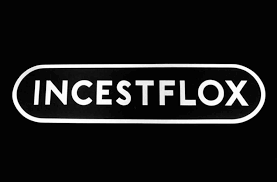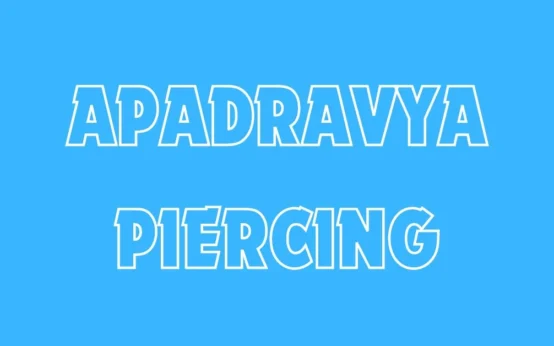Trends begin in subcultures and often capture the public’s attention. One viral trend, Incestflox, is especially controversial. Its moral ramifications and even its legality have deeply divided scholars, sociologists, and everyday people.
In this article, I will explain Incestflox and why it is so controversial while also examining its foundation and societal impact.
Table of Contents
What Exactly Is Incestflox?
Defining Incestflox
Incestflox, to define it more accurately, involves a controversial and provocative trend that blends satirical commentary on family dynamics with themes of taboo and societal boundaries. The term originates from a fusion of “incest,” referencing familial relationships that challenge cultural taboos, and “flox,” a coined suffix implying the unfolding or blooming of controversial ideas in internet culture. The phrase was first used in underground meme forums before spreading to mainstream platforms in 2021, and while its title is shrill and evocative, it is critical to use the right lens to understand its repercussions. While its title is shrill and evocative, it is essential to use the right lens to understand its repercussions.
The Rise of Incestflox
Incestflox has gradually accumulated attention in recent years because of its growing presence on social media platforms, online forums, and digital communities where viral and controversial content thrives. It has been referenced in various meme cycles, discussed in niche subcultures, and amplified through reaction videos and think pieces that explore fringe internet phenomena.
This surge is due to shifting social attitudes toward taboo topics, a growing appetite for shock-value content, the influence of digital creators pushing the boundaries of acceptable discourse, and a cultural tradition of using satire to provoke debate. Additionally, the algorithmic nature of online platforms often boosts provocative material, giving it more visibility. Compelling content—videos, memes, discussions, and more—has diversified around the term, bringing Incestflox to the public’s attention.
An essential example is the viral circulation of a satirical video that portrayed exaggerated family dynamics under the guise of commentary on modern media tropes. This piece unexpectedly struck a chord—critically and humorously—generating dialogue beyond smaller cultures and niche communities. The first known post referencing Incestflox appeared in 2021, emerging from an underground meme forum before spreading to mainstream platforms. It’s been polarizing online spaces since.
The Controversy Behind Incestflox
Why Is Incestflox Considered Controversial?
Debates around Incestflox are as varied as the audiences who engage with it. Critics argue that the trend challenges ethical norms, promotes inappropriate content, and desensitizes viewers to taboo subjects under the guise of humor or satire. Some worry that its prevalence normalizes dangerous behaviors or undermines essential values, especially when younger or more impressionable audiences are exposed to it without context. For these critics, Incestflox represents not just a trend but a symptom of a deeper erosion of digital boundaries and moral clarity.
On the other hand, defenders of Incestflox emphasize its role as a form of creative freedom, often arguing that it serves as a satirical commentary on societal taboos, media sensationalism, and the absurdity of certain cultural narratives. They claim that the trend is not meant to be taken literally but to provoke critical thought, challenge outdated norms, and reflect on the extremes of internet culture. This divide fuels many ongoing debates regarding the phenomenon’s authenticity and acceptance in online culture, highlighting the tension between shock-driven content and deeper thematic intent.
The Debate: Morality vs. Freedom of Expression
The intrapersonal ethical conflict regarding Incestflox rests on whether it goes beyond the limits of decency or is simply self-violating art. Ethical concerns often clash with ideas of free speech, with arguments underscoring how nuanced controversial themes can be.
- Critics’ Perspective: Morality should be central to building an online environment. Critics warn that desensitization to taboo subjects, normalization of harmful stereotypes, and the trivialization of serious familial boundaries encouraged by Incestflox could have damaging effects. They argue it may blur the line between satire and endorsement, leading some individuals to misinterpret or internalize these themes in unhealthy ways.
- Supporters’ Perspective: Supporters argue that Incestflox can be used creatively to challenge societal norms and spark meaningful discussions as long as it remains in a safe, controlled context.
These conflicting perspectives show how complicated the conversation about Incestflox has become.
The Impact of Incestflox on Society and Culture
Influence on Online Communities
Incestflox has carved out niche communities where intense discussions thrive. Platforms such as Reddit, Twitter, and TikTok feature both support and backlash. Some forums amplify it humorously through memes and satire, while others critique its societal consequences and ethical implications.
Their efforts have sparked spin-offs, memes, and even dedicated online spaces where people share everything from personal stories to academic think pieces, showing its multidimensional reach.
Psychological and Social Implications
The impact of participating in a polarizing trend such as Incestflox on the individual’s psyche is especially relevant. Incestflox evokes various feelings on an individual level, from profound grief to admiration, discomfort, and even confusion. Ultimately, there is a chance that people may shift their understanding of certain subjects due to frequent exposure to these topics—the outcome of this may not be good.
The sociocultural consequences discussed above are even broader and include the advancement of debates regarding ethics, the freedom to express oneself freely online, and the responsibilities that come with being a content creator or consumer.
Is Incestflox Illegal? Legal Perspectives
The Legal Landscape Around Incestflox
Whether Incestflox violates the law depends on its execution and context. While not inherently illegal, specific content associated with Incestflox might breach laws related to obscenity, the distribution of harmful material, copyright infringement, or the spread of false or misleading information.
Governments worldwide take drastically different approaches to regulating online trends. Countries with stricter media laws may crack down on Incestflox content, whereas others might allow it under freedom-of-speech protections.
Consequences for Content Creators and Consumers
Depending on the nature of the content, proponents of Incestflox may suffer account bans or be subject to legal action. Some cases have emerged, such as content removals, account suspensions, and investigations into borderline material tied to Incestflox. This leaves a lingering question about whether the trend can continue thriving legally.
The Future of Incestflox: What’s Next?
Will Incestflox Continue to Grow in Popularity?
Predicting the future of Incestflox is no easy task. Trends typically have a short shelf life, and Incestflox’s novelty may fade over time. On the other hand, its legacy could remain, influencing new forms of controversial expression.
Experts believe its trajectory will depend on ongoing platform guidelines, evolving cultural values, and the broader legal landscape surrounding online content moderation and expression.
Still, the discussion has sparked hints at a broader conversation about the boundaries of acceptable online trends.
How Can Society Address the Issue of Incestflox?
The key to navigating divisive phenomena like Incestflox lies in fostering healthy discussions. Educators, researchers, and platform moderators must collaborate to create thoughtful content policies that respect free expression while minimizing harm.
Some actionable steps include:
- Encouraging critical thinking when engaging with controversial trends.
- Strengthening online content moderation without stifling dialogue.
- Providing accessible education on the ethical responsibilities of internet users.
A Critical Moment for Online Trends and Society
The rise of Incestflox isn’t just about an online trend. It expresses the ongoing debate within the digital world on ethics, creativity, and the boundaries that come with freedom of speech and expression.
The best way to understand this trend is to approach it intentionally, creating an informed and empathetic society. How do you feel about Incestflox? What dynamics do you envision sculpting its influence? Share your thoughts below and join an ongoing conversation about the complicated intersection of culture and the web.
Don’t miss out! Check back often for fresh recommendations and trending series.


 What is an Apadravya Piercing? Everything You Need to Know
What is an Apadravya Piercing? Everything You Need to Know  How to Access Your Remotasks Login: A Step-by-Step Guide
How to Access Your Remotasks Login: A Step-by-Step Guide  Understanding HCOOCH CH₂ H₂O: Structure and Applications
Understanding HCOOCH CH₂ H₂O: Structure and Applications  Silly Wankok Meaning: Why It’s Trending Everywhere
Silly Wankok Meaning: Why It’s Trending Everywhere  Top Features That Make Blogsternation.com Stand Out
Top Features That Make Blogsternation.com Stand Out  Top 5 Appfordown Applications to Elevate Your Mobile Experience
Top 5 Appfordown Applications to Elevate Your Mobile Experience